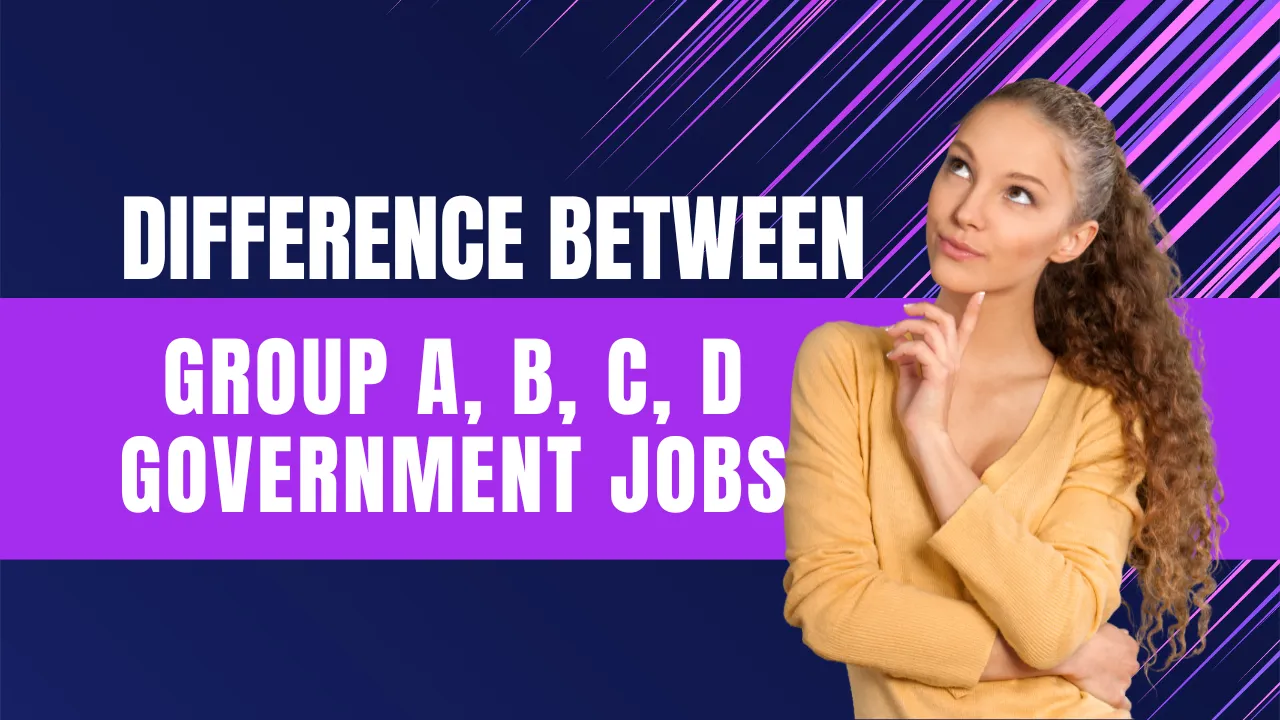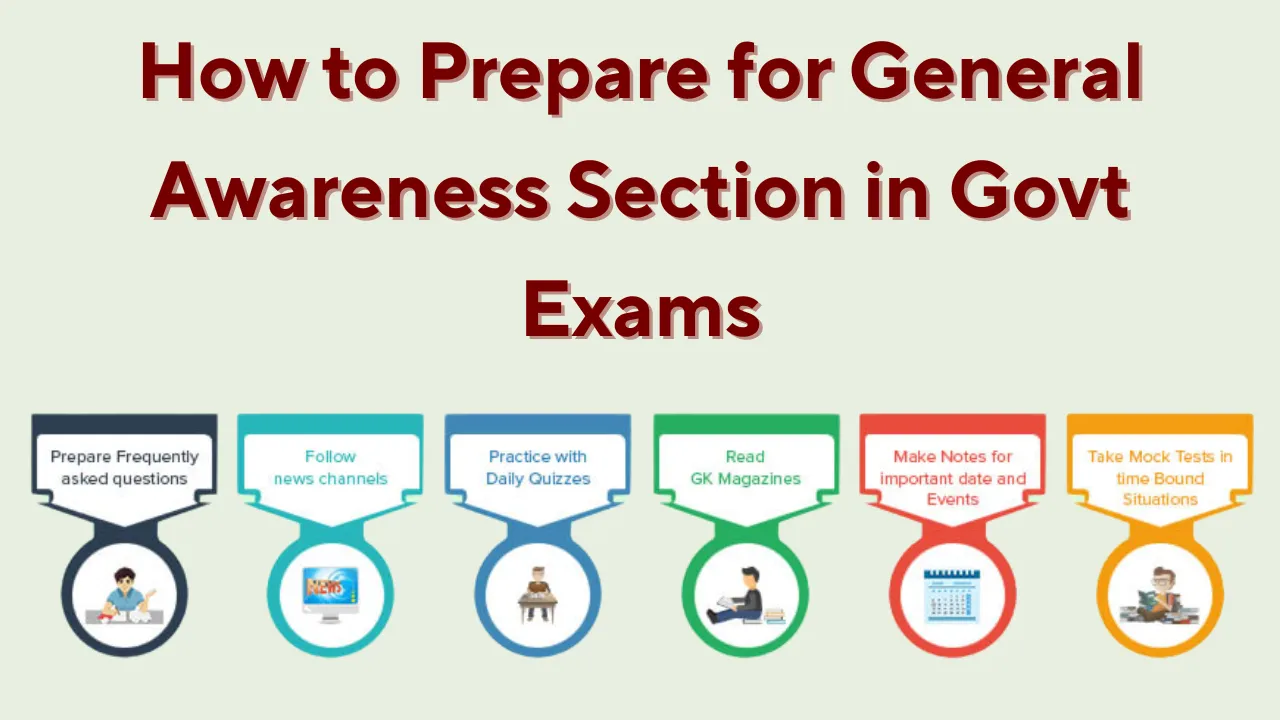Difference Between Group A, B, C, D Government Jobs: The Indian government job sector is vast, offering positions for individuals with different educational qualifications and skill sets. To manage such a wide range of roles and responsibilities, government jobs are classified into four main categories: Group A, B, C, and D. Each group represents varying levels of authority, responsibility, pay scale, and eligibility criteria.
In this article, we will explore the difference between Group A, B, C, D government jobs, covering their roles, recruitment processes, required qualifications, and career scopes. Understanding these distinctions can help aspirants choose the right path for their career in the government sector.
Difference Between Group A, B, C, D Government Jobs
The difference between Group A, B, C, D government jobs lies in the hierarchy, job roles, authority levels, eligibility requirements, and salary structure. Group A officers hold top-ranking administrative roles, while Group D positions consist of support-level tasks. Group B and C fall in between, handling supervisory and clerical duties, respectively.
Overview Table
| Group Category | Role & Responsibility | Eligibility Criteria | Examples |
| Group A | High-level officers involved in policy-making, planning, leadership | UPSC Civil Services, advanced degrees, high qualifications | IAS, IPS, IFS, Scientists in DRDO, ISRO |
| Group B | Mid-level officers, supervise staff, assist in policy implementation | SSC CGL, State PSC Exams, promotions | Section Officers, Inspectors, Assistant Engineers |
| Group C | Clerical, administrative, supportive tasks | SSC exams, state-level exams, basic graduation or 12th pass | Clerks, Stenographers, Data Entry Operators |
| Group D | Manual, maintenance, support staff roles | Minimal educational qualifications, direct recruitment | Peons, Drivers, Security Guards |
Group A Government Jobs: Role & Eligibility
Group A positions are considered the highest-ranking roles in the government sector. These officers are responsible for leadership, strategic planning, policymaking, and high-level administration. Their decisions significantly influence governance at the central and state levels.
Role:
- Policy formulation and implementation
- Strategic decision-making
- Managing departments and leading teams
- Representing the government at national and international levels
Eligibility:
- Recruitment through highly competitive exams such as UPSC Civil Services Examination
- High-level educational qualifications like graduation, post-graduation, or professional degrees
- Exceptional analytical and leadership skills required
Examples:
- Indian Administrative Service (IAS)
- Indian Police Service (IPS)
- Indian Foreign Service (IFS)
- Scientists in DRDO, ISRO
Group B Government Jobs: Role & Eligibility
Group B officers act as a bridge between Group A officers and lower-level staff. They assist in executing policies and administrative work while also supervising and guiding subordinate employees.
Role:
- Administrative and supervisory tasks
- Assisting Group A officers in policy execution
- Managing day-to-day functioning of government offices
Eligibility:
- Recruitment primarily through exams like SSC Combined Graduate Level (CGL) or State Public Service Commission (PSC) exams
- Some positions are filled via promotion from Group C roles
- Minimum qualification typically includes a graduate degree
Examples:
- Section Officers
- Inspectors (Income Tax, Customs, Excise)
- Assistant Engineers
Group C Government Jobs: Role & Eligibility
Group C jobs form the backbone of government offices. Employees in this group are responsible for clerical, administrative, and supportive roles that ensure smooth office operations.
Role:
- Clerical duties such as record keeping, documentation, and data entry
- Supporting higher-level officers in administrative tasks
- Frontline office work and customer service roles
Eligibility:
- Recruitment through exams like SSC CHSL, SSC CGL, and various state-level recruitment boards
- Educational qualifications range from 12th pass to graduation, depending on the position
Examples:
- Clerks
- Stenographers
- Data Entry Operators
Group D Government Jobs: Role & Eligibility
Group D positions involve basic support tasks, maintenance, and manual labor. These roles require minimal qualifications but are essential for ensuring the proper functioning of government departments.
Role:
- Manual labor and support services
- Office cleaning, maintenance, driving, security duties
Eligibility:
- Minimal educational qualifications, generally up to 10th or 12th standard
- Recruitment through direct selection or basic eligibility tests
Examples:
- Peons
- Drivers
- Security Guards
Key Differences Between Group A, B, C, D Jobs
Understanding the difference between Group A, B, C, D government jobs can be summarized as:
- Authority & Responsibility:
Group A has the highest decision-making authority, followed by Group B (supervisory roles), Group C (clerical/admin roles), and Group D (support/manual roles). - Eligibility Criteria:
Educational qualifications and competitive exam difficulty increase progressively from Group D to Group A. - Pay Scale & Benefits:
Group A jobs offer the highest salaries, perks, and allowances, while Group D roles receive the basic pay scale. - Promotions:
Group D employees can be promoted to Group C, and similarly, Group C employees can rise to Group B roles. However, Group A positions typically require clearing high-level exams.
General Career Scope and Growth
Each group in government jobs offers distinct career growth paths:
- Group A & B:
Regular promotions through departmental exams and seniority-based evaluations. Group A officers may also have international assignments and leadership roles. - Group C & D:
Promotions are often seniority-based, with opportunities to appear in departmental exams to climb up to higher groups.
Additionally, all groups offer job security, retirement benefits, and social prestige, making them attractive career options.
Frequently Asked Questions
1. What is the main difference between Group A, B, C, D government jobs?
The difference lies in the level of authority, eligibility, responsibilities, and pay scales. Group A holds top-level roles, while Group D involves basic support tasks.
2. How can one apply for Group A government jobs?
Group A jobs are mainly filled through competitive exams like the UPSC Civil Services Examination, requiring higher educational qualifications.
3. Can a Group C employee get promoted to Group B?
Yes, many departments allow promotions from Group C to Group B through departmental exams and seniority.
4. What is the eligibility for Group D jobs?
Group D jobs generally require minimal qualifications, usually up to 10th or 12th standard.
Final Thought
Understanding the difference between Group A, B, C, D government jobs is essential for anyone aspiring to a government career. Each group offers unique roles, responsibilities, and growth opportunities. Whether you aim for leadership in Group A, stable clerical roles in Group C, or entry-level positions in Group D, a clear understanding of these categories can help you plan your career effectively.
Feel free to share your questions or thoughts about government job classifications in the comments below. Keep exploring more career guidance articles to stay informed!







